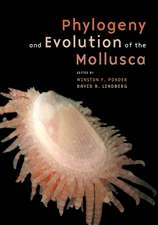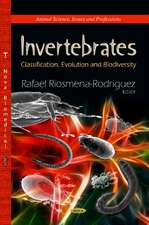Invertebrate Historecognition: Bodega Marine Laboratory Marine Science Series
Editat de Richard K. Grosberg, Dennis Hedgecock, Keith Nelsonen Limba Engleză Paperback – 5 noi 2011
Preț: 384.48 lei
Nou
Puncte Express: 577
Preț estimativ în valută:
73.57€ • 76.66$ • 60.92£
73.57€ • 76.66$ • 60.92£
Carte tipărită la comandă
Livrare economică 03-17 aprilie
Preluare comenzi: 021 569.72.76
Specificații
ISBN-13: 9781461283119
ISBN-10: 1461283116
Pagini: 204
Ilustrații: VIII, 192 p.
Dimensiuni: 170 x 244 x 11 mm
Greutate: 0.33 kg
Ediția:Softcover reprint of the original 1st ed. 1988
Editura: Springer Us
Colecția Springer
Seria Bodega Marine Laboratory Marine Science Series
Locul publicării:New York, NY, United States
ISBN-10: 1461283116
Pagini: 204
Ilustrații: VIII, 192 p.
Dimensiuni: 170 x 244 x 11 mm
Greutate: 0.33 kg
Ediția:Softcover reprint of the original 1st ed. 1988
Editura: Springer Us
Colecția Springer
Seria Bodega Marine Laboratory Marine Science Series
Locul publicării:New York, NY, United States
Public țintă
ResearchCuprins
Histocompatibility Responses in Freshwater Sponges: A Model for Studies of Cell-cell Interactions in Natural Populations and Experimental Systems.- The Role of Mesohyl Cells in Sponge Allograft Rejections.- Sulfated Polysaccharide-mediated Sponge Cell Aggregation: The Clue to Invertebrate Self/nonself-Recognition?.- Historecognition and Immunocompetence in Selected Marine Invertebrates.- Speculations on the Relationships of Two Botryllus Allorecognition Reactions—Colony Specificity and Resorption—to Vertebrate Histocompatibility.- Molecular Analysis of Historecognition in Marine Invertebrates (Abstract only).- Evolution of MHC Genes and Functions: The Disease Connection.- Retreat Growth in the Ascidian Botryllus schlosseri: a Consequence of Nonself Recognition.- Historecognition and Fine-scale Spatial Genetic Structure in Sessile Benthic Invertebrates.- Recognition of Self or Nonself? Theoretical Implications and an Empirical Test.- Kin Recognition Using Innate Labels: A Central Role for Piggy-backing?.- The Evolution of Allorecognition Specificity.- Retrospective.- Contributors.










